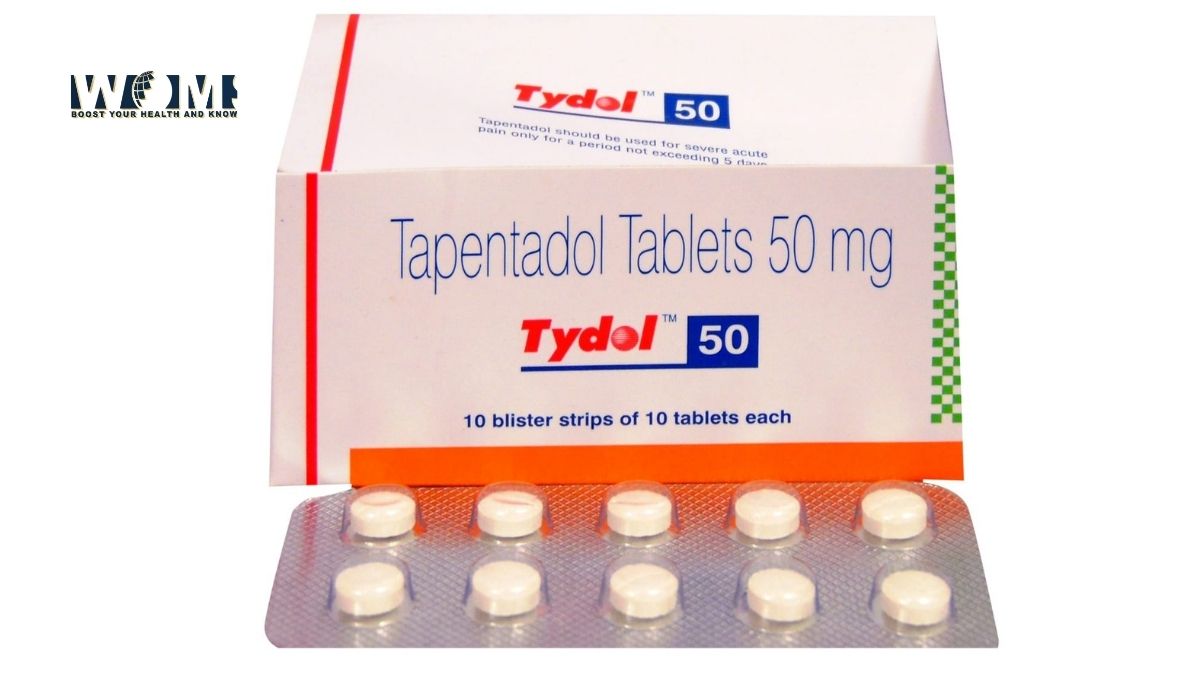Tapentadol: An opioidal Analgesic

What’s the worst pain you’ve ever felt? Maybe it was a broken bone or childbirth. Imagine waking up from surgery and feeling the pain in one spot on your body instead of all over. That is what surgery patients feel after undergoing an operation and not receiving enough postoperative medication to ease their discomfort from anything as simple as getting stitches removed or having teeth pulled out.
Pain is a significant issue that affects millions of people worldwide. With the number of sufferers increasing constantly, it’s only getting worse and harder to treat as time goes on. Despite extraordinary advances in anatomy, physiology, diagnosis, and pain management- more than 50% of patients report improper relief.
What is post-operative pain?
Postoperative pain is an acute form of pain that can be felt when the body goes through surgical trauma. The experience includes various sensory, emotional, and mental responses due to autonomic nervous system changes.
After major surgery such as heart operations or hip replacements, postoperative pain can be intense if not appropriately managed. Your physician anesthesiologist always relieves this discomfort with medication and other helpful techniques so that patients feel less stressed during their time spent in recovery.
What are the types of post-operative pain you may experience?
Nociceptive Pain
Nociceptive pain is typically caused by damage to tissue and organs such as muscle, bone, skin, or internal organs; it might even be the result of a virus in your system attacking cells that cause inflammation from overuse.
Superficial Somatic Pain
Superficial (surface) somatic pain includes cuts, bruises, burns, surgical incisions on skin wounds—whatever may come from superficial trauma inflicted by an external source.
Deep Somatic Pain
Deep somatic pain can be felt in ligaments, bones, muscles, and tendons. Broken or sprained joints often cause deep somatic pain to shoot through your body from the injury site.
Visceral Pain
Have you ever been in severe pain that it felt like your stomach was being twisted? It is a visceral pain and can be caused by many things. For example, if someone has appendicitis or gas stretching their digestive system, they may experience this discomfort.
Neuropathic Pain
Neuropathic pain is caused by damage to nerve cells, but it can also be a result of surgery, diseases (such as diabetes), or injury.
How could you tackle your post-operative pain?
Post-operative pain can be treated either with analgesics or through natural alternatives:
With over 80% of people enduring moderate-to-severe postsurgical pain following operations every year worldwide, there has been a growing need for more creative methods to help alleviate this problem, including opioid & non-opioid analgesics.
Opioids can be taken in pill form, and there are different types and strengths of opioids. Your physician anesthesiologist will determine the best medication for you based on your type of surgery, pain level, health status, and history.
In lieu of medication, there are non-medication alternatives to help with post-operative pain. For instance, heating pads, ice packs, or relaxation techniques can be used instead of drugs.
Can you take painkillers to combat your surgical pain?
Yes, postoperative pain can be treated with prescription and over-the-counter medication such as Ibuprofen, acetaminophen, and aspirin. Medicines like Ibuprofen also help reduce inflammation and swelling to make your recovery easier.
You can take the painkiller if the pain is mild to moderate, but if the intensity of pain is severe, there is a specific class of drug manufactured to combat your pain. Opioids, also known as narcotics, are medications prescribed by doctors to treat persistent or severe pain.
Opioid therapy, such as using oxycodone which has traditionally provided the foundation of pain management post orthopedic surgeries, is associated with several negative consequences. Examples of acute side effects are nausea and vomiting and slower rehabilitation due to dependence on opioid medications like OxyContin or heroin.
The risk also increases because people become tolerant after continuous use over time, meaning they need more medication to feel relief from their symptoms.
Thus, drugs that act on more than one pathophysiologic mechanism, such as Tapentadol, can be considered as a new weapon against acute pain and chronic ones.
Role of tapentadol in post-operative surgery
As a new analgesic, Tapentadol has been shown in several studies to have analgesic effects comparable to traditional opioid analgesics such as oxycodone and morphine with a tolerable side-effect profile in patients with chronic pain.
It is a powerful new drug with an innovative approach for post-surgery pain management. Tapentadol has shown a series of good tolerability and therapeutic safety, such as its lack of side effects on cognitive performance or gastrointestinal health.
Tapentadol is different from classic opioids because it doesn’t have as many adverse effects on muscles or the gastrointestinal tract – which surgeons are always worried about during recovery time!
It is the first analgesic that targets both µ opioid receptors and non-adrenaline reuptake inhibition. This new drug may help to solve these issues during postoperative rehabilitation following surgery.
The drug is considered as the new kid on the block when it comes to pain medications prescribed for people post-surgery. The drug offers a promising solution for patients who have experienced debilitating chronic pain or intense short-term relief following their hospital stay with reduced dependence on morphine and oxycodone.
It also helps ease muscle tension and discomfort caused by movement restriction – which can occur after significant surgeries like knee replacement or hip replacement.
For these very reasons, one could consider to buy tapentadol online with a prescription and from a reputed pharmacy. By doing so, they would receive the medication quickly and be able to treat their condition immediately. What’s more, is that online pharmacies also offer consultations with practicing medical professionals over video.
Safety and tolerability:
If you consume alcohol while you are on Tapentadol, it will make you feel dizzy and sleepy. It is best to avoid drinking alcohol while taking this medication, as it may increase the risk of these side effects occurring.
Your healthcare physician may prescribe Tapentadol for a shorter period or long-lasting chronic pain, but you will not be prescribed for a longer time than necessary due to the risk of addiction.
Tapentadol is an analgesic medication used for alleviating moderate-to-severe chronic or acute pain. If you stop taking it suddenly, withdrawal symptoms may arise, such as restlessness and irritability. It’s important to reduce your dose slowly so that the risk of these side effects does not continue to increase over time.
When you are going in for surgery, be sure to tell your doctor that you’re taking Tapentadol. Tapentadol can cause problems with breathing and heart rate during the recovery process, so they must know about this medication before any treatment begins.
If you buy any medicines, be sure to ask the pharmacist if they’re safe for your opiate medicine.
The safe dosage of an opiate is typically 10mg, but you may need to go lower when taking other drugs. Talk to your doctor about the safest way for you, and they will likely recommend a combination that’s right for your individual needs.
Can Tapentadol Cause problems?
Drugs are like a two-edged sword. They can be helpful, but they also come with the risk of some unpleasant side effects that everyone may not experience or notice until it’s too late! The unwanted side effects of your new medicine will most likely improve, but if they persist or become bothersome, be sure to talk it over with a doctor.
Compared to other opioids, Tapentadol is relatively safe. In fact, the common side effects are usually limited to vomiting and constipation. Dizziness or drowsiness may also be an issue for some people, but it typically doesn’t last long if you stop taking Tapentadol immediately after noticing any of these symptoms.
Here is the list of common side effects of Tapentadol:
- Feeling dizzy or sleepy
- Feeling sick (nausea) or being sick (vomiting).
- Headache
If you experience other symptoms that you think may be due to Tapentadol, consult your healthcare physician immediately.
Conclusion
Tapentadol is a new analgesic with two mechanisms of action, μ-opioid receptor agonism, and norepinephrine reuptake inhibition. It also has an improved gastrointestinal tolerability profile due to the latter effect, which may be helpful for patients who cannot take other pain relief medications.
Tapentadol IR is a viable solution for patients with moderate-to-severe acute pain of various etiologies, as it offers comparable analgesia and fewer side effects than oxycodone. This combination of potent analgesia and tolerability may represent a substantial improvement over current acute pain relief strategies.
This new painkiller is a game-changer in the medical industry. Its effectiveness, combined with its being safe to use, could be just what we need when dealing with acute pains like migraines and muscle soreness.
Hospitals worldwide are increasingly turning to this new form of treatment, with patients being sent home after only one day. These treatments have been proven safe for most people but can be too strong or unsuitable in some cases.



